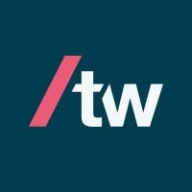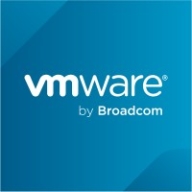

GoCD and VMware Tanzu Platform are competing in the DevOps and cloud management space. While VMware Tanzu Platform is generally viewed as superior due to its robust features, GoCD is favored for its affordability and support satisfaction.
Features: GoCD offers continuous delivery focus, value stream visualization, and open-source flexibility. VMware Tanzu Platform provides comprehensive Kubernetes support, multi-cloud deployment, and enterprise-grade scalability.
Room for Improvement: GoCD could benefit from a wider range of plugins and enhanced user interface aesthetics. It might also improve scalability options and integration complexity for large enterprises. VMware Tanzu Platform could refine its ease of setup, manage its cost-effectiveness better, and improve initial user onboarding.
Ease of Deployment and Customer Service: GoCD is known for straightforward and rapid deployments. VMware Tanzu offers robust support but may present complexities during deployment due to its extensive scope, underscoring its suitability for larger environments.
Pricing and ROI: GoCD is cost-effective with minimal setup expenses, offering significant returns via its streamlined processes. VMware Tanzu, though having higher initial costs, compensates with extensive functionalities and cloud management, delivering compelling ROI for full-scale solutions.
| Product | Market Share (%) |
|---|---|
| VMware Tanzu Platform | 1.5% |
| GoCD | 1.8% |
| Other | 96.7% |


| Company Size | Count |
|---|---|
| Small Business | 4 |
| Midsize Enterprise | 2 |
| Large Enterprise | 3 |
| Company Size | Count |
|---|---|
| Small Business | 10 |
| Midsize Enterprise | 3 |
| Large Enterprise | 10 |
VMware Tanzu Platform is designed for cloud-native development and management of Kubernetes, CI/CD processes, microservices, and containerized workloads. It supports deployments both on cloud and on-premises, providing centralized management via Mission Control.
VMware Tanzu Platform offers seamless integration with vSphere, ESX, and vSAN, supporting centralized cluster management and lifecycle management. The platform provides a GUI for monitoring CI/CD pipelines and network policies, enhancing multi-tenancy and Day 2 operations. Users can easily manage Kubernetes clusters, monitor applications, and integrate with tools such as GitHub, GitLab, Cloud Foundry, and Azure. It ensures compliance and security for service providers, financial institutions, and businesses.
What are the key features of VMware Tanzu Platform?
What benefits and ROI should users look for in VMware Tanzu Platform reviews?
Industries such as financial institutions, service providers, and businesses requiring rigorous compliance and security deploy VMware Tanzu Platform. These entities benefit from centralized management, streamlined DevOps processes, and integrated tools, enhancing their capabilities in cloud-native developments and containerized workloads.
We monitor all Build Automation reviews to prevent fraudulent reviews and keep review quality high. We do not post reviews by company employees or direct competitors. We validate each review for authenticity via cross-reference with LinkedIn, and personal follow-up with the reviewer when necessary.